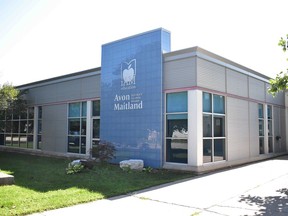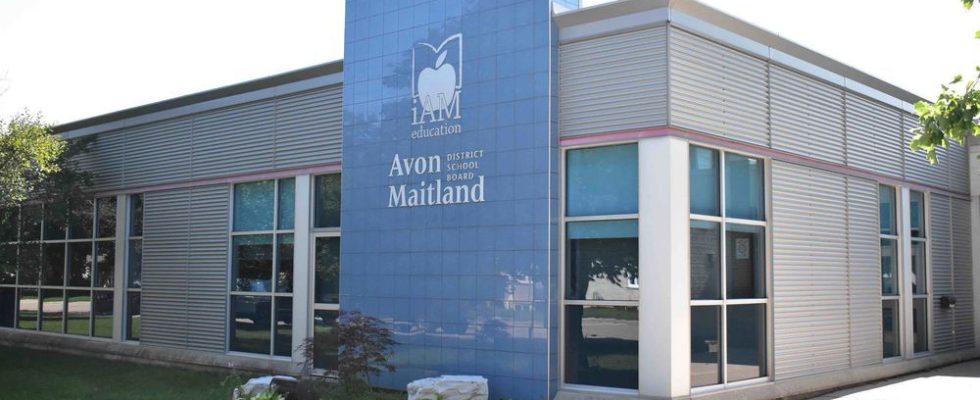The results of a workforce census that saw the participation of almost 75 per cent of employees last fall is helping the Avon Maitland District School Board foster a more-inclusive workplace and diversify staff recruitment.

The results of a census aimed at collecting demographic information on employees of the Avon Maitland District school board will help foster a better understanding of its workforce in the interest of fostering a more inclusive workplace while diversifying staff recruitment, officials say.
Open to all school board employees from Oct. 24 to Dec. 31 of last year, the census was a voluntary, confidential self-identification survey aligned with the board’s commitment to equity, diversity and inclusiveness and was informed by provincial legislation, including the Ontario Human Rights Code, Ontario’s anti-racism data standards and the Ontario Ministry of Education’s equity action plan.
“It’s a big priority – a big recommendation – coming from the Ontario Ministry of Education,” said board research manager Allison Segeren. “In the past, they had required the school boards collect demographic data from students, and the school board completed that work in 2018 and 2019. It’s not an absolute requirement, but a number of school boards across Ontario are then extending that demographic data collection to their workforces. … We figure if we better understand the demographic portrait of our staff, we can sort of better address their needs in the workplace. … As a public education institution, part of what we also set out to do was to understand how reflective of our students and how reflective of the broader Huron and Perth communities our (board) workforce is.”
Segeren said the response rate to the census survey was one of the highest of any district school board in Ontario, with nearly 75 per cent of staff from every department and employee group participating. With such a high level of engagement, Segeren said the board was able to capture a more accurate dataset to allow for that comparison between student and staff demographics, as well as the wider demographics of communities across Huron and Perth counties.
According to a summary of the census results, more than 79 per cent of staff who participated identified as female, nearly 18 per cent identified as male and less than one per cent identified as non-binary. A total of 469 participants considered themselves a person with a disability, with roughly half of that number indicating they had a mental-health disability or condition.
Further, 2.4 per cent of participants indicated they had a diverse racial identity, with 0.94 per cent identifying as Indigenous and 0.44 per cent identifying as Black. While more than 92 per cent of participants indicated English was their first language, a total of 17 other languages, including Urdu, Indigenous languages, Japanese, Arabic, Cantonese and Hindi, were also listed as participants’ first languages.
When it came to religious and spiritual beliefs, the census results showed nearly 51 per cent of participants identify as Christian, 36 per cent are not religious, roughly one per cent fall under the category of religious or spiritual minority, and more than 10 per cent said they preferred not to answer.
“At a high level, some of the findings that the census revealed did speak to some trends that are common in other boards,” Segeren said. “When we look at gender identity, overwhelmingly our workforce identifies as female. That’s pretty common for other boards across Ontario. … We had four per cent of our staff identify with a minority sexual orientation, and when we look at a Statistics Canada data for Huron-Perth or from the Province of Ontario or across Canada, that four per cent is pretty well represented.
“Our ethnic and racial identity backgrounds are not as diverse as some of the major urban centers around us, but we do have a lot of different ethnic identities within the school board, different religious backgrounds in the board, different regional identities across the board, and those closely aligned with our students. We don’t have quite the racial representation that we have across Huron-Perth communities, but we are close and I think we are closer than we might have thought.”
Segeren said the census data is being shared with the school board’s human resources department to help shape some staff recruitment and retention strategies. She said the board is looking further afield for prospective employees and reviewing internal application processes to identify and remove barriers that exist for equity serving groups in the interest of further diversifying the board’s workforce.
“Now that we know what some of our demographics look like, we’re working on setting some targets moving forward to hold ourselves accountable but also, when we better understand our diversity, we can sort of develop professional learning opportunities and programs and policies within our school board that address the needs and the identities of the staff that we have,” Segeren said.
To read the census review and the report in its entirety, visit www.amdsb.ca/apps/pages/index.jsp?uREC_ID=1114183&type=d&pREC_ID=1388652.

Comments
Postmedia is committed to maintaining a lively but civil forum for discussion and encourages all readers to share their views on our articles. Comments may take up to an hour for moderation before appearing on the site. We ask you to keep your comments relevant and respectful. We have enabled email notifications—you will now receive an email if you receive a reply to your comment, there is an update to a comment thread you follow or if a user you follow comments. Visit our Community Guidelines for more information and details on how to adjust your email settings.
Join the Conversation